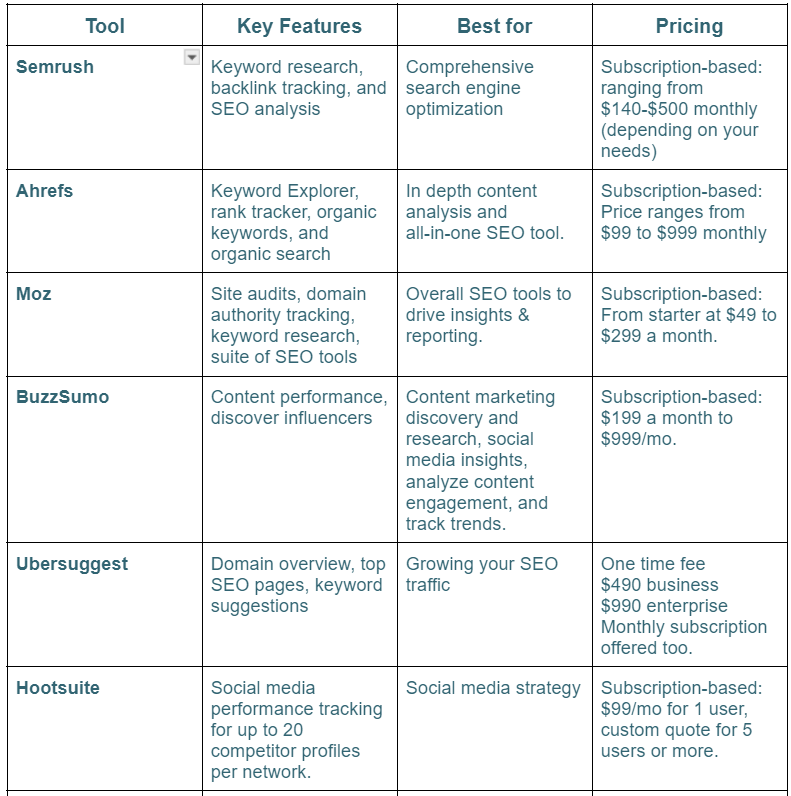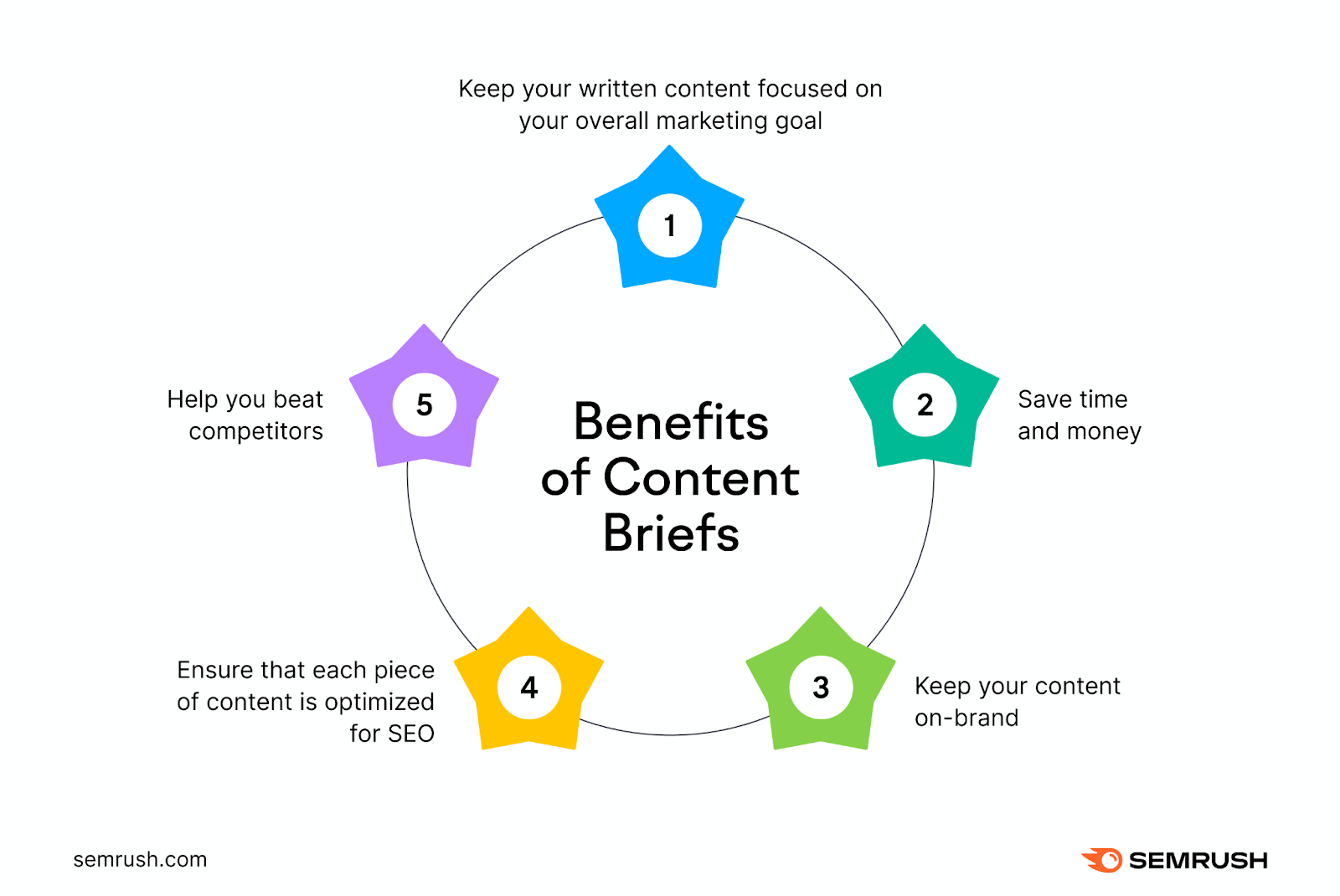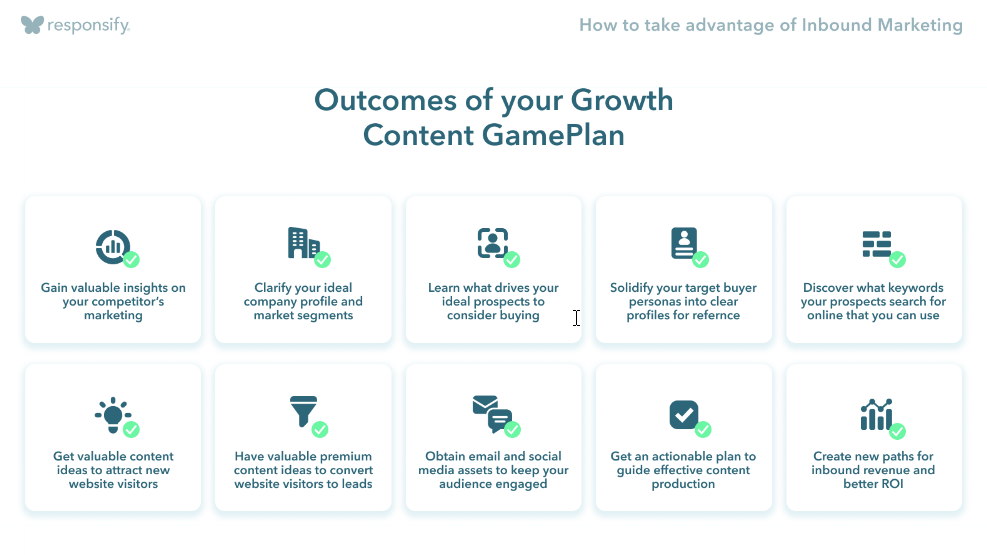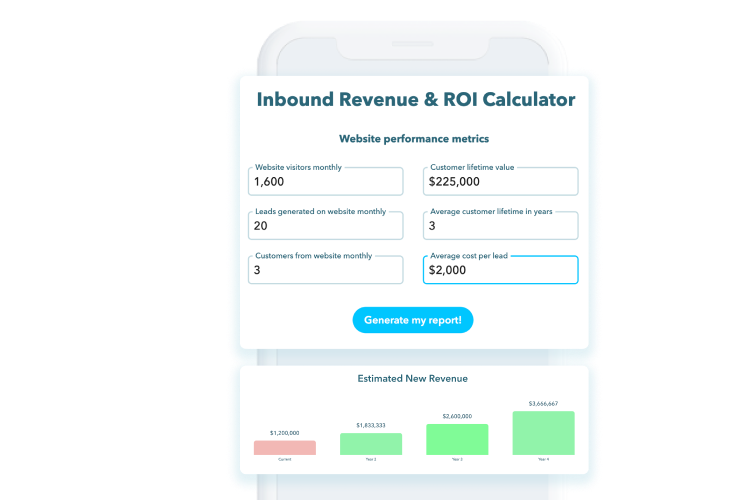 1,625 views
1,625 views August 15, 2024
August 15, 2024 12615 Views
12615 Views  10 min read
10 min readAs a CEO or head of Marketing at a B2B company, you’re juggling more responsibilities than ever. You know how content, SEO, and inbound marketing can help you build exposure to your audience, trust in your solution, shorten sales cycles, and ultimately increase sales and revenue (Read: Inbound Marketing Statistics: The Evidence of Its Effectiveness). It’s hard to figure out what your options are to create an effective and proven inbound marketing strategy.
In this post, we’ll cover all the ways people like yourself can make progress through a proven process, using the right tools, and hiring the right people with expertise in SEO and content creation. We’ll discuss doing research, developing a comprehensive strategy (that works!), and much more. We’ll also cover how to cost-effectively get help putting a targeted and proven strategy in place to create a roadmap to success (if needed).
For B2B inbound marketing, your focus should be creating high-quality, valuable content that addresses your target audience’s specific needs and pain points. The quality and relevance of your content to your target audience is the most important feature of your inbound marketing strategy.
Marketers like yourself face challenges creating exceptional content to increase visitors, leads, and buyers. But there are tools to help, educational resources, and ways to get started. From our 11+ years of experience in the B2B digital marketing space, during which we have worked with numerous B2B companies and conducted extensive research and data analysis, we can wholeheartedly say that you need exceptional strategy development, production, and implementation. We have a process we found to be the most successful.
Keeping an eye on your competition is not just about knowing what they are doing but also about understanding why they are doing it. This will help you identify your competitive advantages and disadvantages relative to those in the market. By analyzing your competitive landscape, you can identify market opportunities that align with your business objectives.
Understanding what your competitors are doing will help you identify opportunities, gaps, and best practices to inform your own approach. Here are some tools to help with your content inbound marketing strategy and competitive analysis.
Using a combination of tools will provide the best comprehensive view of your competitors’ strategies across your inbound marketing.
Customer research is a strategic tool for inbound marketing. It not only helps you understand your target audience’s needs, preferences, and behaviors but also plays a crucial role in defining their best market segments and identifying buyer personas. This insight lets you capture what matters most to them, guiding your marketing efforts.
You can identify common patterns and trends by gathering customer and internal insights. Gathering buying insights, such as their priority initiatives, success factors, perceived barriers, buyer’s journey, and decision criteria, will not only help determine the content that they will crave but also engage them in the content creation process.
Also Read – Inbound Marketing Tools to Effectively Generate Leads
Creating detailed buyer personas is not just a task; it’s a powerful tool that empowers you to guide compelling content production and your overall inbound marketing strategies. Building out your personas will help you uncover what your audience values most. Buyer personas are important because they allow you to segment the different types of customers your business wants to attract.
Here’s a step-by-step guide to creating a buyer persona:
Step 1. Research your audience
Conducting one-on-one interviews with customers is a way to deeply connect with their motivations, goals, and challenges. Nothing beats the experience of a genuine conversation with real people, and it will make you more empathetic toward your audience. Conduct one-on-one interviews with your client and internal team to gather their thoughts and insights. The number of interviews can vary depending on the complexity of the industry, product or service, and objectives. Through the interview processes, you’ll get demographic insights like average age, gender, education, and occupation, as well as psychographic information such as interests, values, and behaviors (purchasing habits, product usage, and brand loyalty.)
Step 2. Identify key market segments: Segment your audience
Based on the research, you’ll be able to divide your audience into different segments, each representing a buyer persona.
Step 3. Create detailed personas
Whether your company needs to take advantage of a market opportunity or is facing a competitive threat, you need clarity. Creating a buyer persona will give you this clarity, allowing you to focus and integrate your personas into product development, content creation, and sales strategy. Watch more on why B2B organizations need buyer personas. . .
Here are some research tools that can help you build buyer personas. Each tool has unique features and pricing, so choosing the one that best fits your requirements is important.
Building effective buyer personas makes your production and marketing strategies more targeted, leading to better engagement, customer satisfaction, and higher sales.
Now it’s time to craft campaigns that your personas will find engaging and feel explicitly designed for them. Developing a campaign concept for a content inbound marketing strategy involves creating content and experiences that not only attract potential customers to your brand but also make them feel valued and engaged. Deliver value through content that educates instead of pushing sales messages. Here’s how:
In addition to the tools mentioned already, here are more essential tools that can help you in your inbound campaign conception:
Research and Development
Google Analytics: Free tool to analyze website traffic to understand visitor demographics, behavior, and interests. You will uncover your audience’s favorite page with which they engage.
HubSpot Analytics: If you’re using HubSpot, their analytics tools provide detailed insights into your inbound marketing performance, including email campaigns, content engagement, and lead conversion. (Another tool into what’s working and what’s not) Pricing varies from $20-$3,600 per month.
Hotjar: Gain insights into how users interact with your website through heatmaps, session recordings, and surveys. Pricing varies from Basic (free) to Business $80/month. Identifying topics, defining campaign concepts, and using tools can help you plan, execute, and optimize your inbound marketing strategy, ensuring each step is aligned with your goals and resonates with your target audience.
Keyword research is finding and analyzing keywords to create content that is more likely to rank higher in the search results. If you want search traffic and leads from Google, you need to target topics your audience is searching for. By mastering the art of keyword research, you can tailor your content, products, and services to meet market demand, attract traffic, and drive more conversions.
This understanding puts you in the driver’s seat, giving you the power to shape your online presence. Keyword research is not just a task; it’s a strategic move. It may be the number one strategy every business needs to get right, and doing so can set you apart from the competition. If you haven’t found this success yet, you’re not alone . . .
Using a tool like ahrefs, you can take control of your online presence, exploring the possibilities and determining if the keyword you’d like to rank for is ‘doable.’
Let’s say you’re an agency specializing in Inbound Marketing and offering a service that addresses B2B pain points. For example, say the pain point is creating engaging content that gets results.
Using a tool like Ahrefs, you can explore the keyword ‘inbound marketing’ . . .  You can see it’s challenging to rank for this specific keyword, which has a keyword difficulty of 71 but with a high volume in search of 14k. You’d have to consider whether your business has the chance of ranking based on your website domain authority and keyword difficulty score. Hypothetically, let’s say your domain authority is under 40. A higher authority can result in more ranking opportunities.
You can see it’s challenging to rank for this specific keyword, which has a keyword difficulty of 71 but with a high volume in search of 14k. You’d have to consider whether your business has the chance of ranking based on your website domain authority and keyword difficulty score. Hypothetically, let’s say your domain authority is under 40. A higher authority can result in more ranking opportunities.
Do you give up on the competitive key phrase? If you tried to optimize and rank for the exact keyword, you would probably enter an unwinnable contest (at this point.) The option is to consider more specific keywords—long tail keywords. These are longer and more specific phrases that visitors are more likely to use when they’re closer to a point-of-purchase. In this scenario, you could try ‘inbound marketing strategy.’ It may be more obtainable for a website with a lower domain authority.  Or keep going deeper and more long-tail and add B2B inbound marketing strategy..
Or keep going deeper and more long-tail and add B2B inbound marketing strategy..
Its keyword difficulty is easy and has a lower search volume. Though lower in volume, it is more specific and targeted to the visitors you want.
Also Read – How to Achieve the Highest Content Marketing ROI
How do you ensure each piece of content you create hits home and engages your audience?
Start with well-crafted content briefs and outlines for your content inbound marketing strategy. 
A content outline, also known as a brief, is a pivotal stage in the content creation. It serves as a roadmap, guiding you toward creating content that attracts new business and solidifies your position as a thought leader in your industry. Investing in a solid content brief is your best strategy for effectively communicating your expectations to the writer, whether they are in-house or outsourced. It sets the stage for a successful content piece.
The brief should provide all the information a content creator would need to produce the outline based on your specifications. Content briefs should include the target keywords, tentative title, product or service tie-in, and internal links. Briefs save time, prevent rewrites, and reduce revisions.
Blog post outline—With the brief in hand, writers have a clear direction to lay out an outline for faster approval. This stage is not just checking the tone, offering additional context, word count, and verifying the overall direction of the piece. It’s about collaborating with the subject expert to ensure the content is exactly what you need.
During the final blog post writing, the review by the SME and strategist is crucial. Their input keeps the post on target and ensures it’s ready for the editing stage, where it will be refined to the best piece available for your audience.
Content proofreading will then ensure there are no grammar errors or other mess-ups.
We gathered some tools to help with your content outlining:
Content brief generator – their AI-driven content brief generator is designed to help you outline an article. Pricing ranges from $58 monthly for basic to $299 for premium.
Content brief templates – compile data from the SERPS. Pricing is from $13 a month to $66 a month.
Also Read – Content Creation Tools: What You Need and Don’t Need
Understanding the process, tools, and workforce needed is crucial. Successful content creation is time-consuming especially if you create your process from scratch. And you don’t have the right team or skills in place, if you’re currently losing market share because your strategy isn’t strong enough, or worse yet, you’re missing the opportunity to be seen as a thought leader in your industry.
There are different approaches and options to market to your potential customers. Most businesses start producing content without a strategy or a plan. If that’s you, you’re not alone. This is a common issue, with . . .
Those who have a documented strategy and work closely with a partner who understands the ramifications of not having a strategy are not only successful; they are setting a benchmark for others to follow. . . You can see results like this—an example of one of our client’s inbound successes— but it takes time and dedication. And you need to know what you’re doing…  You know you need to create a strategy. You understand that a process, tools, and people are needed to do it. The choice becomes how you do it and understand the risks of doing it on your own.
You know you need to create a strategy. You understand that a process, tools, and people are needed to do it. The choice becomes how you do it and understand the risks of doing it on your own.
Developing a successful inbound marketing strategy requires time, effort, and a deep understanding of your audience and industry. It’s not a quick fix, but the results are worth it. It can become costly if you do not understand inbound marketing strategies and everything it entails. Working with a specialized partner who has got this down to a science, can help you do inbound in half the time, half the budget and 10x faster and better. We call our Inbound Marketing Strategies a ‘Growth Content Game Plan’ It’s time to take advantage of Inbound Marketing and get the outcomes you’re after. . .  Schedule a call to get a cost-effective Game Plan with a team using these strategies for 11+ years.
Schedule a call to get a cost-effective Game Plan with a team using these strategies for 11+ years.
Also Read – Combining The Best Content Marketing Tools for Success
An effective inbound marketing strategy consists of several essential components that work together to attract, engage, and convert potential customers:
📢 Ready to build a powerful inbound marketing strategy? Book a consultation today!
Creating high-quality content involves strategic planning and execution:
📢 Need help creating content that converts? Contact us for expert guidance!
SEO is a crucial component of inbound marketing as it ensures that your content reaches the right audience organically. Here’s how SEO enhances inbound marketing:
📢 Want to improve your SEO strategy? Get in touch with our SEO specialists today!
Lead generation and nurturing are key to turning website visitors into customers:
📢 Struggling with lead generation? Book a consultation to optimize your inbound strategy!
To streamline your inbound marketing efforts, you need the right tools:
📢 Want to implement the best marketing tools for your business? Let’s discuss your needs!
Tracking performance is crucial for refining your strategy and maximizing results. Key metrics to monitor include:
📢 Need help tracking and optimizing your inbound marketing efforts? Contact us today!
